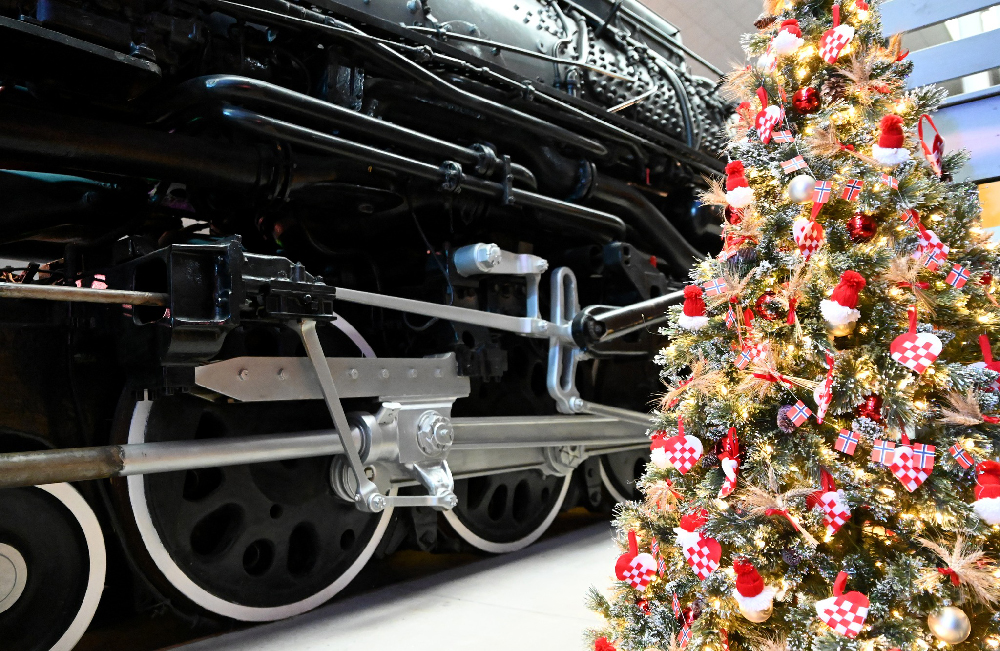
Christmas and trains — they go hand-in-hand, just like stockings hung by the fireplace with care or the trip over the river and through the woods to grandma’s house for Christmas dinner. The foremost Christmas and trains connection is that of holiday travel and the toy train around the Christmas tree. Both have historic and contemporary implications. Beyond riding a train somewhere for the holidays or watching the train huff and chuff around the tree, there is a deeper connection between Christmas and trains — one that may not be that obvious. Herein lies our five mind-blowing facts about Christmas and trains.
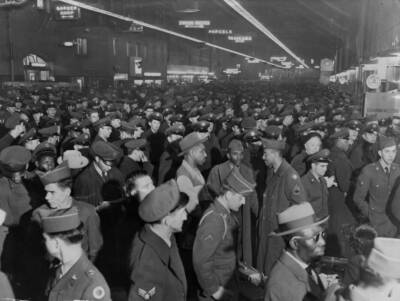
No. 1 — The real Christmas rush
On Sept. 1, 1894, the St. Louis Terminal Railroad Association opened its new, grand Union Station on Market between 18th and 19th streets. At its peak, the station would host passenger trains from 22 railroads. The massive trainshed, covered ground the size of eight football fields, measuring 600-feet wide, 630-feet long and standing 74-feet high. Under the truss roof were lined up 32 tracks. Going to or from the platforms, passengers crossed the concourse, itself a whooping 660-feet wide by more than 100-feet across, covering the space between the trainshed and headhouse.
Through the 1920s, St. Louis Union Station was busy, however, passenger counts ticked up in the 1940s as World War II played out. Then in a mad I’ll-be-home-for-Christmas-moment, the station witnessed its busiest day ever on Dec. 22, 1945. In a single day well over 100,000 people crossed the concourse, many servicemen on their way home from wartime duty. It was one of the most joyous holiday rushes ever experienced when it comes to travel.
No. 2 — The Hallmark Christmas train
The idea of placing a train around the family Christmas tree is connected with the Lionel brand of toy trains and can be traced back over a century. There is no doubt many youngsters and their parents fulfilled dreams of operating a train through a Lionel set running around the holiday evergreen.
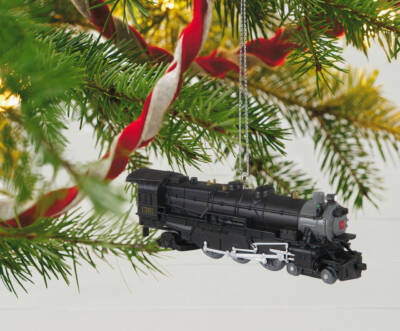
While the popularity of Lionel trains has ebbed and flowed over the decades, the name is still synonymous with the concept of real trains being presented as operating miniatures. In 1996, another long-stand American corporate name joined the Lionel-Christmas combination. Hallmark, originally known for its greeting cards, introduced the first in its series of Christmas tree ornaments based on Lionel trains. The first release was a rendition of the Lionel New York Central 4-6-4 Hudson locomotive. Since then, Hallmark has added over 125 locomotives and train cars to the collection. For 2023, the new pieces include a Pennsylvania K4 4-6-2 locomotive, tender, and Pennsy caboose.
Hallmark’s collection of Keepsake Ornaments has become an American Christmas cultural fixture so much so that The Henry Ford Museum now has an exhibit detailing the collection including the Lionel train pieces.
No. 3 — The Christmas tree from where?
Over the last decade, surveys indicate that more than 99 million U.S. homes display a Christmas tree. That’s about 77% of American residences. The question becomes: where did the tree come from? Let’s discount the artificial ones. More than 80% of the fake trees sold in the U.S. were produced in China. They arrived in America via an intermodal container; were carried by rail and truck to the big box distribution center; and finally, trucked to the local big box.
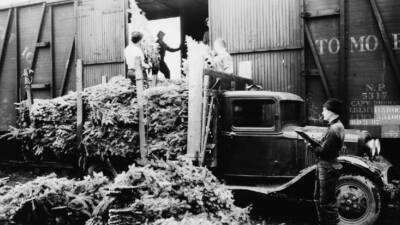
On the fresh-tree side, rail has been involved, well, since the beginning of the Christmas tree tradition, which can be traced to around 1900. While almost every state has some Christmas tree production, the leading tree producers are Oregon, North Carolina, Michigan, Pennsylvania, Wisconsin, and Washington. From these states trees were, at first, shipped around the country, and now around the world. Boxcars and flatcars carried most trees until trucks garnered the bigger market share in the 1970s.
In Chicago in the 1920s more than 1 million trees were decorated. Some of these trees were hauled in by eastern railroads that reached the Windy City. A portion came via Great Lakes boats. The trees also arrived by train, having been harvested in Michigan and Wisconsin. A 40-foot flatcar would deliver 500 bundles of four to six 8-foot trees per load — 2,000 to 3,000 trees. Each tree sold for only a buck or two. Bigger trees — 25- to 35-feet tall, which were displayed in churches or some of the downtown buildings will tall lobbies — came only three or four per carload.
Today, some Christmas trees still travel by train. In Oregon, cut trees are loaded into both domestic and overseas containers, then shipped via the Union Pacific to California or various West Coast ports for export.
No. 4 — A Zephyr Christmas
From locomotive pilot to the dome-observation car markers, the California Zephyr was a special streamliner. A joint effort of the Chicago, Burlington & Quincy, Denver, Rio Grande & Western, and the Western Pacific, this Budd-built, stainless-steel conveyance boasted five dome cars and the scenery to match. A Zephyr trip made memories for a lifetime but find yourself aboard the Silver Lady on Christmas and you were in for a treat.
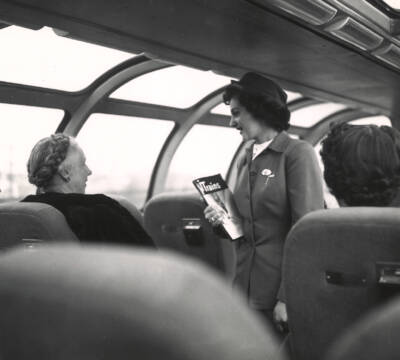
The California Zephyr staff included a young lady called a Zephyrette. It was her job to assist passengers, especially mothers, their children, and older travelers. The Zephyrettes also took care of the extra touches that made the trip extraordinary — including celebrating Christmas. A decorated artificial tree would be placed in the observation-lounge. Ladies aboard on Christmas day would receive a corsage. The children were gathered and spirited away to one of the domes for a holiday-themed storytime and singing of Christmas songs. Many times, each child received a stocking imprinted with their name and stuffed with candy. Following the dome program, the Zephyrette would lead the children to the dining car where the waiters served a treat of ice cream and Christmas cookies. Santa, actually a DRG&W employee, made an appearance aboard the Zephyr in 1957.
No. 5 — Christmas dinner railroad style
While the ideal setting in which to enjoy Christmas dinner is in the home surrounded by family and friends, every holiday there are those who for one reason or another find themselves traveling on the holiday. Realizing this circumstance, railroads made a special effort to serve a traditional Christmas dinner in the dining car. Turkey, sometimes ham, was the centerpiece. The bird was roasted right there in the dining car and served with all the proper trimmings — stuffing, potatoes, sweet potatoes, cranberry relish, vegetables, and pumpkin or other pie for dessert. The special Christmas menu was offered along with all of the regular dishes normally served by a given railroad.
The idea of Christmas dinner in the dining car lasted into the Amtrak era. For the first years of the new intra-city passenger service, Amtrak ran equipment in what was labeled its Heritage Fleet. These were the cars obtained from the railroads that bought into Amtrak, including the dining cars that before May 1, 1971 — Amtrak’s start date — were serving passengers across the nation. With the capability still at hand, Amtrak roasted turkeys and hams just as was done previously to make Christmas day a bit brighter for those who needed to travel.
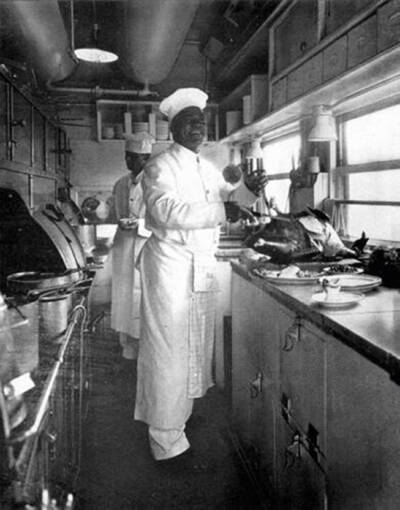
We have gathered the recipes from a traditional dining car Christmas meal. They are available for your cooking and dining enjoyment here.
From all of us at Trains, we wish you and yours a Merry Christmas, a safe, healthy, and Happy New Year, and safe travels wherever the holidays may find you.






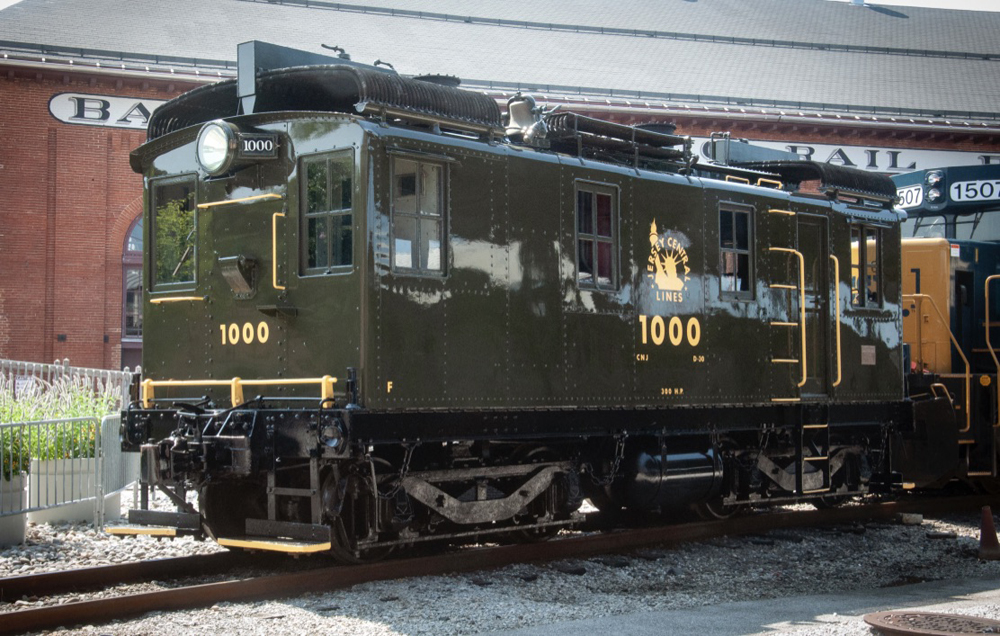
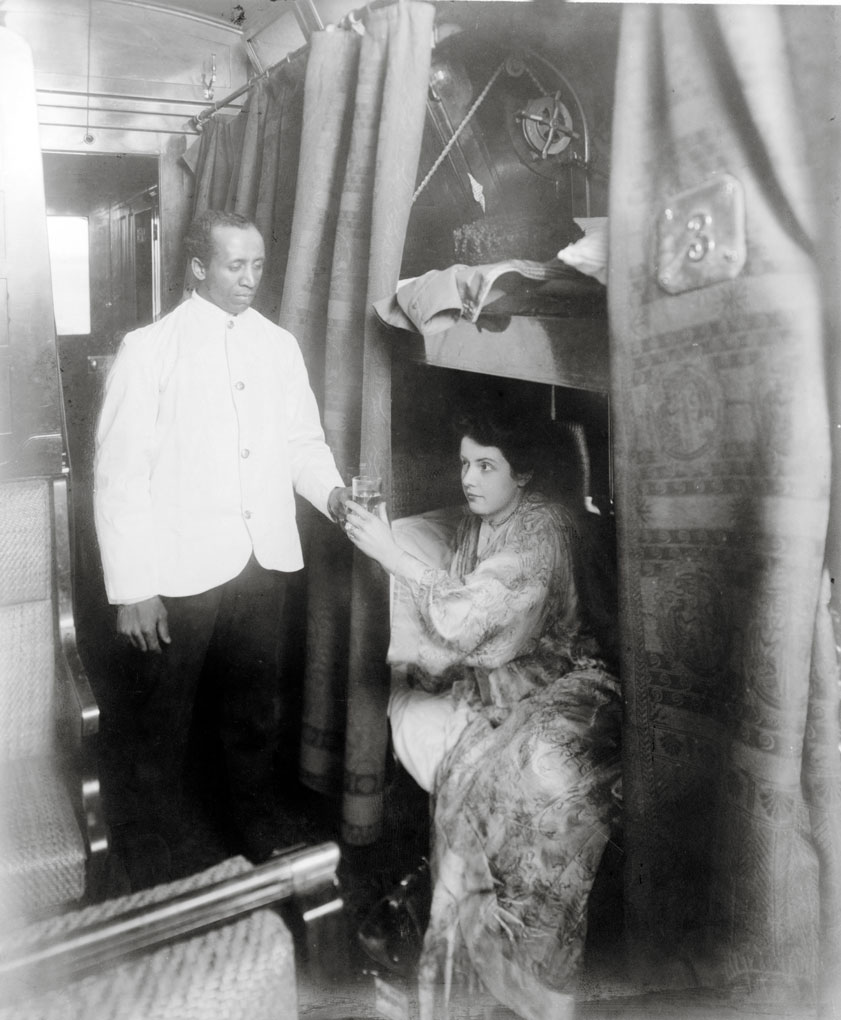
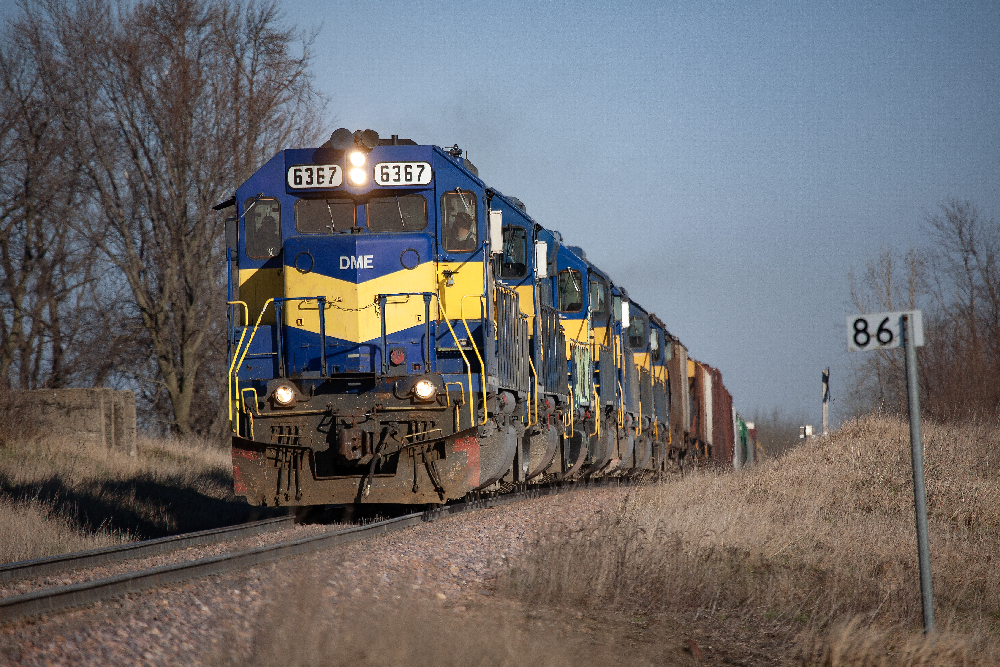
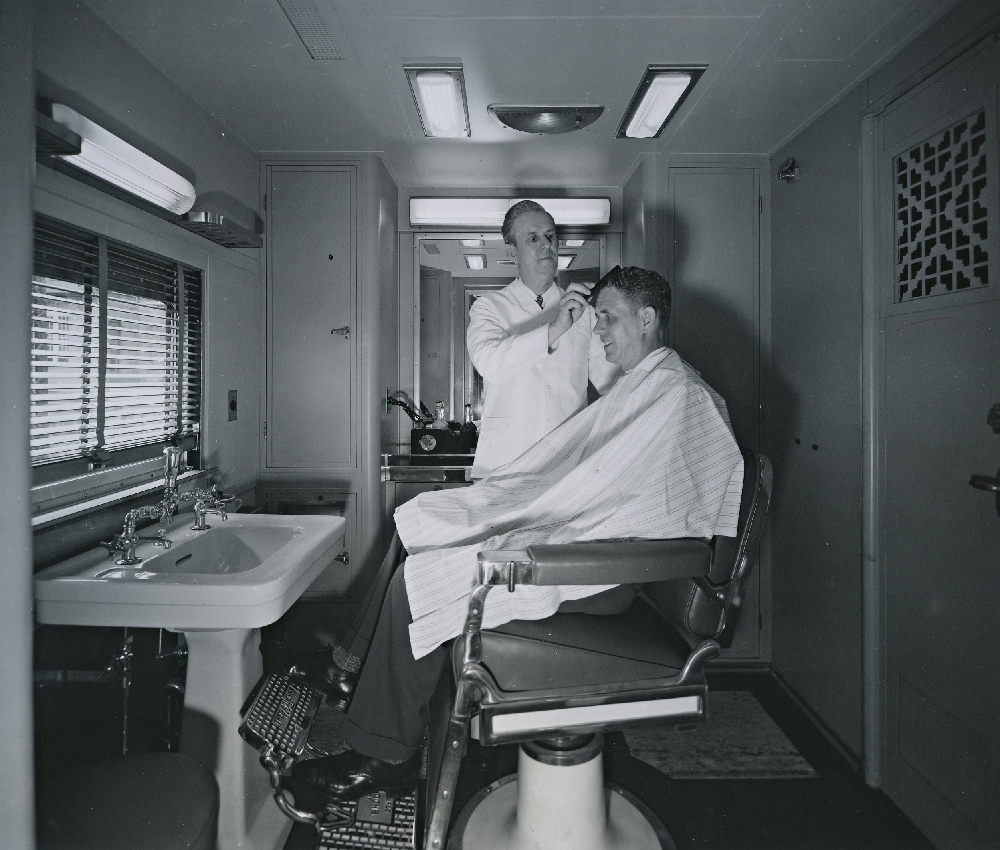




This brings us back to that era when the train was the way to travel and every youngster wished for a train set for Christmas. The train both prothpe and model or toy held the upper hand and the lion’s share in both the toy market and in travel across the country. Sadly in today’s age of technology and fast travel. Both electronic toys and gadgets are king now and people travel by plane or drive to get to their holiday destinations Even most big department stores and box stores don’t even sell train sets for Christmas and many a child of this modern age never heard of or even know of Lionel and most of the parents don’t even bother to encourage interest in trains both real and toy if the hobby and interest of trains and model railroading is to survive and continue for generations to come it will be up to the older folks like us and even some young folks that love trains to keep that spark alive and encourage both business and the media to promote and help spread that interest and love of trains and train travel or else it will be just another memory or completely forgotten. Joseph C Markfelder
I believe the children were served a “sock” (not “stock”) filled with candy.
A fun and interesting article. Thanks for posting.